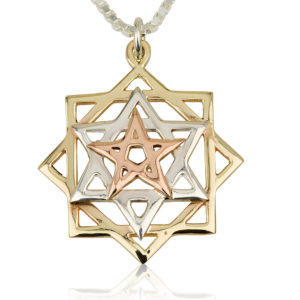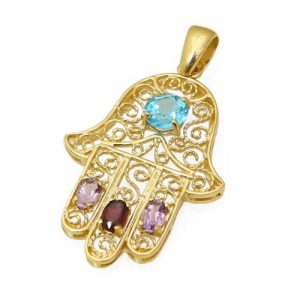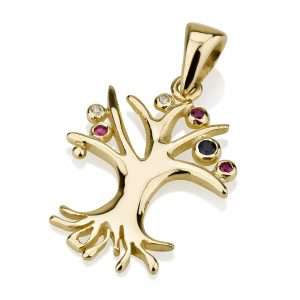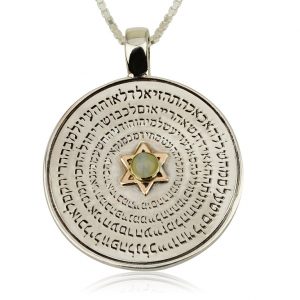[vc_row][vc_column][vc_column_text]
[/vc_column_text][/vc_column][/vc_row][vc_row][vc_column][vc_column_text]
What is Kabbalah?
Kabbalah refers to the ancient mystical teachings which were passed down together with the Torah. It translates to “that which is received.” In order to receive the esoteric wisdom found in Kabbalah one must negate their own ego and submit to the will of G-d. There are three types of Kabbalah: Theoretical, Meditative, and Mystic. The latter two categories have been largely lost over the years; what’s taught today is the cryptic theoretical Kabbalah found in the Zohar. However there are bits and pieces of meditative and mystic Kabbalah still to be found in the world and many of our Kabbalah jewelry items incorporate this magic.
Kabbalistic Words and Symbols
Ana Bekoach
Said to have immense spiritual strength, Ana Bekoach is a well-known liturgical poem whose authorship is attributed to the tanna Rabbi Nehunya ben HaKanah who lived in the Middle Ages. The prayer contains 42 words, the first letter of each combines to form the 42 letter Divine Name of G-d. Ana Bekoach is so powerful, it is said to be able to alter the flow of reality, to achieve your wildest dreams.
Ben Porat Yosef
The full phrase, “Ben Porat Yosef, Ben Porat Alei Ayin” (A graceful son is Yosef, a graceful son by a spring) was a blessing given to Josef by his father, Jacob, right before his death (Genesis 49:22). It is brought down in Kabbalah that this blessing contained the power to protect Yosef (and all his descendants) from the jealousy of others—the “Evil Eye.”
Evil Eye
The power of the Evil Eye comes from the envy and ill-wishes of others. When a person looks at the good fortune of others with jealousy, they give G-d reason to reevaluate—did this person really deserve the good fortune they received? Are they being too showy and boastful? In this way the Evil Eye has been cast. There are many talismans used to ward off the Evil Eye and keep the jealousy of others at bay. These talismans include “Good Eye” jewelry, Hamsas, and red strings, among others.
Hamsa
The Arabic word for “five,” Hamsas are a symmetrical hand-shaped amulet popular in Muslim and Jewish cultures. In Kabbalah, the Hamsa symbolizes the hand of Miriam who protected her brother Moses from harm. It is often inscribed with different Kabbalistic symbols and prayers used to bring peace and ward off evil.
Merkabah Star of David
The word merkabah means chariot, and refers to the metaphorical throne-chariot of G-d allegorically said to be driven by four wild animals (Ezekiel 1:4-26). In Kabbalah the merkabah is an esoteric means of travel between spiritual dimensions. When used in a physical form the merkabah takes the shape of a three-dimensional Star of David comprised of two interlocked pyramids. This shape contains an intense spiritual force of attraction to attract your hearts’ desires.
Tree of Life
The tree of life has many meanings, however in Kabbalah it refers to the formation of the Sefirot which resemble a tree. The Sefirot are the heavenly emanations of G-d, through which we relate to Him and emulate Him. In English they are: Crown, Understanding, Wisdom, Knowledge, Strength, Kindness, Harmony, Glory, Victory, Foundation, and Kingship. To truly understand these Sefirot, one must dive into the deepest esoteric mysteries of the universe and be willing to completely subjugate oneself to the Will of G-d.
72 Divine Names of G-d
The Kabbalah lists 72 Names of G-d, each one comprised of three letters with its own unique power. These names were taken from three verses in the Torah, each verse comprised of 72 letters (Exodus 14:19-21). These verses describe the manifestation of G-d’s unlimited power as He split the Sea of Reeds. This miracle showed the world not only G-d’s power, but His intimate interest in mankind as well. Each of the divine three-letter names has a unique ability to bring about positive change in your life.
(To learn more about the origin of the 72 names see https://www.chabad.org/kabbalah/article_cdo/aid/1388270/jewish/72-Names-of-G-d.htm)[/vc_column_text][/vc_column][/vc_row]







